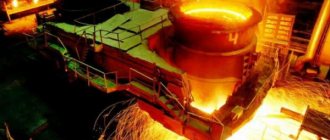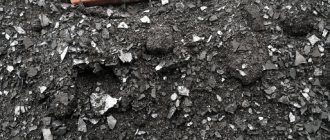General information:
| 100 | General information | |
| 101 | Name | Aluminum |
| 102 | Former name | |
| 103 | Latin name | Aluminum |
| 104 | English name | Aluminum, Aluminum (in the USA and Canada) |
| 105 | Symbol | Al |
| 106 | Atomic number (number in table) | 13 |
| 107 | Type | Metal |
| 108 | Group | Amphoteric, light, non-ferrous metal |
| 109 | Open | Hans Christian Ørsted, Denmark, 1825 |
| 110 | Opening year | 1825 |
| 111 | Appearance, etc. | Soft, light and ductile silver-white metal |
| 112 | Origin | Natural material |
| 113 | Modifications | |
| 114 | Allotropic modifications | |
| 115 | Temperature and other conditions for the transition of allotropic modifications into each other | |
| 116 | Bose-Einstein condensate | |
| 117 | 2D materials | |
| 118 | Content in the atmosphere and air (by mass) | 0 % |
| 119 | Content in the earth's crust (by mass) | 8,1 % |
| 120 | Content in seas and oceans (by mass) | 5,0·10-7 % |
| 121 | Content in the Universe and space (by mass) | 0,005 % |
| 122 | Abundance in the Sun (by mass) | 0,006 % |
| 123 | Content in meteorites (by mass) | 0,91 % |
| 124 | Content in the human body (by weight) | 0,00009 % |
Application
Aluminum is used in metallurgy as a base for alloys (duralumin, silumin) and an alloying element (alloys based on copper, iron, magnesium, nickel). Aluminum alloys are used in everyday life, in architecture and construction, in shipbuilding and automotive industry, as well as in space and aviation technology. Aluminum is used in the production of explosives. Anodized aluminum (coated with colored films of aluminum oxide) is used to make jewelry. Metal is also used in electrical engineering.
Properties of the aluminum atom:
| 200 | Properties of the atom | |
| 201 | Atomic mass ( molar mass ) | 26.9815386(8) amu (g/mol) |
| 202 | Electronic configuration | 1s2 2s2 2p6 3s2 3p1 |
| 203 | Electronic shell | K2 L8 M3 N0 O0 P0 Q0 R0 |
| 204 | Atomic radius (calculated) | 118 pm |
| 205 | Empirical atomic radius* | 125 pm |
| 206 | Covalent radius* | 121 pm |
| 207 | Ion radius (crystalline) | Al3+ 53 (4) pm, 67.5 (6) pm (in parentheses the coordination number is indicated - a characteristic that determines the number of nearest particles (ions or atoms) in a molecule or crystal) |
| 208 | Van der Waals radius | 184 pm |
| 209 | Electrons, Protons, Neutrons | 13 electrons, 13 protons, 14 neutrons |
| 210 | Family (block) | p-family element |
| 211 | Period in the periodic table | 3 |
| 212 | Group on the periodic table | 13th group (according to the old classification - the main subgroup of the 3rd group) |
| 213 | Emission spectrum |
How winged metal is produced
Metal production can be divided into two stages.
- The first is the extraction of bauxite, its crushing and separation of silicon using steam.
- Second stage : alumina is mixed with molten cryolite and the mixture is exposed to electric current. During the reaction, liquid aluminum settles at the bottom of the bath.
The resulting metal is cast into ingots; then it is sent to consumers or to the production of alloys and high-purity aluminum.
The method is energy-consuming and consumes a lot of electricity.
It can be technical or ultra-clean
The resulting aluminum is called technical or unalloyed. It contains at least 99% pure metal. It is consumed by the electronics industry and is needed in the production of heat exchange and heating devices and lighting equipment.
Some of this metal is sent for additional purification, “refining.” As a result, we have a high-purity metal with an aluminum content of at least 99.995%.
It is used in electronics and in the production of semiconductors. Cable production and chemical engineering now cannot do without ultra-pure aluminum.
Interesting: before the discovery of an industrial method for producing aluminum, it was rare and cost more than gold. Our great chemist, D.I. Mendeleev, the British honored him with a gift. These were analytical balances (an indispensable thing for a chemist), whose cups were made of gold and aluminum.
Metal for wings
Without a metal like aluminum, conquering the sky is impossible. People are not given wings, but man has wanted to fly since ancient times. It is not in vain that the myth of Icarus has lived since ancient times. Attempts to take off were made several times.
But the breakthrough came in 1903, when the Wright brothers, romantics of the sky and wonderful mechanics, took an airplane into the air. This plane opened the way to the sky.
Chemical properties of aluminum:
| 300 | Chemical properties | |
| 301 | Oxidation states | 0, +1, +2, +3 |
| 302 | Valence | III |
| 303 | Electronegativity | 1.61 (Pauling scale) |
| 304 | Ionization energy (first electron) | 577.54 kJ/mol (5.985769(3) eV) |
| 305 | Electrode potential | Al3+ + 3e— → Al, Eo = -1.663 V |
| 306 | Electron affinity energy of an atom | 41.762(5) kJ/mol (0.43283(5) eV) |
Wires and cables
The high electrical conductivity of the 1000 series aluminum grades, as well as the 8000 series aluminum alloys, makes them very suitable for the manufacture of electrical conductors. Aluminum conductors are used in the following cases:
- electrical distribution substations;
- power systems of high-rise buildings;
- high-voltage power lines;
- most underground power lines;
- power cables for industrial applications.
Most aluminum in the electrical industry is used in the form of cables (8 out of 13%). However, it is also used in the form of electrical busbars for equipment with high current strength, as well as for powering large buildings. In addition, cables for industrial, commercial and residential buildings may contain many insulated conductors, which are placed in a common protective aluminum sleeve.
Requirements for aluminum used for electrical applications:
- reasonable cost;
- sufficiently high electrical conductivity;
- corrosion resistance;
- strength.
Physical properties of aluminum:
| 400 | Physical properties | |
| 401 | Density* | 2.70 g/cm3 (at 20 °C and other standard conditions, state of matter – solid), 2.375 g/cm3 (at a melting point of 660.32 °C and other standard conditions, the state of matter is liquid), 2.289 g/cm3 (at 1000 °C and other standard conditions , state of matter - liquid) |
| 402 | Melting temperature* | 660.32 °C (933.47 K, 1220.58 °F) |
| 403 | Boiling temperature* | 2470 °C (2743 K, 4478 °F) |
| 404 | Sublimation temperature | |
| 405 | Decomposition temperature | |
| 406 | Self-ignition temperature of a gas-air mixture | |
| 407 | Specific heat of fusion (enthalpy of fusion ΔHpl)* | 10.71 kJ/mol |
| 408 | Specific heat of evaporation (enthalpy of boiling ΔHboiling)* | 284 kJ/mol |
| 409 | Specific heat capacity at constant pressure | 0.903 J/g K (at 25 °C) |
| 410 | Molar heat capacity* | 24.20 J/(K mol) |
| 411 | Molar volume | 9.993 cm³/mol |
| 412 | Thermal conductivity | 237 W/(mK) (at standard conditions), 237 W/(mK) (at 300 K) |
| 413 | Thermal expansion coefficient | 23.1 µm/(MK) (at 25 °C) |
| 414 | Thermal diffusivity coefficient | |
| 415 | Critical temperature | |
| 416 | Critical pressure | |
| 417 | Critical Density | |
| 418 | Triple point | |
| 419 | Vapor pressure (mmHg) | |
| 420 | Vapor pressure (Pa) | |
| 421 | Standard enthalpy of formation ΔH | |
| 422 | Standard Gibbs energy of formation ΔG | |
| 423 | Standard entropy of matter S | |
| 424 | Standard molar heat capacity Cp | |
| 425 | Enthalpy of dissociation ΔHdiss | |
| 426 | The dielectric constant | |
| 427 | Magnetic type | |
| 428 | Curie point | |
| 429 | Volume magnetic susceptibility | |
| 430 | Specific magnetic susceptibility | |
| 431 | Molar magnetic susceptibility | |
| 432 | Electric type | |
| 433 | Electrical conductivity in the solid phase | |
| 434 | Electrical resistivity | |
| 435 | Superconductivity at temperature | |
| 436 | Critical magnetic field of superconductivity destruction | |
| 437 | Prohibited area | |
| 438 | Charge carrier concentration | |
| 439 | Mohs hardness | |
| 440 | Brinell hardness | |
| 441 | Vickers hardness | |
| 442 | Sound speed | |
| 443 | Surface tension | |
| 444 | Dynamic viscosity of gases and liquids | |
| 445 | Explosive concentrations of gas-air mixture, % volume | |
| 446 | Explosive concentrations of a mixture of gas and oxygen, % volume | |
| 446 | Ultimate tensile strength | |
| 447 | Yield strength | |
| 448 | Elongation limit | |
| 449 | Young's modulus | |
| 450 | Shear modulus | |
| 451 | Bulk modulus of elasticity | |
| 452 | Poisson's ratio | |
| 453 | Refractive index |
Melting process at home
The relatively low melting point of aluminum allows this operation to be carried out at home. It should be noted right away that using a powdered mixture as a raw material in a home workshop is too dangerous. Therefore, either ingots or cut wire are used as raw materials. If there are no special quality requirements for the future product, then anything made from this metal can be used for melting.
Melting aluminum in a homemade forge
In this case, it is not particularly important whether the raw materials are coated with paint or not. When aluminum melts, all foreign substances will simply burn out and be removed along with the slag.
To obtain a high-quality melting result, it is necessary to use materials called fluxes. They are designed to solve the problem of binding and removing foreign impurities and contaminants from the melt.
Aluminum crystal lattice:
| 500 | Crystal cell | |
| 511 | Crystal grid #1 | |
| 512 | Lattice structure | Cubic face centered |
| 513 | Lattice parameters | 4.050 Å |
| 514 | c/a ratio | |
| 515 | Debye temperature | 394 K |
| 516 | Name of space symmetry group | Fm_3m |
| 517 | Symmetry space group number | 225 |
cars and equipment
Heating and ventilation systems
Aluminum alloys of the 3000, 5000 and 6000 series have good thermal conductivity. Combined with high strength, these alloys are a good choice for heating and ventilation applications. These systems include the following components using aluminum alloys:
- compressors;
- condensers/evaporators;
- expansion valves;
- fans;
- pipes.
Properties of aluminum that are important for heating and ventilation systems:
- high thermal conductivity;
- high contact coefficient;
- low density;
- high corrosion resistance.
Alumina production
About 95% of all alumina is obtained from bauxite ores.
Bauxite ore
Bauxite (French bauxite) (after the name of the area Baux in the south of France) is an aluminum ore consisting of aluminum hydroxides, iron and silicon oxides, raw materials for the production of alumina and alumina-containing refractories. The alumina content in industrial bauxite ranges from 40% to 60% and higher. It is also used as a flux in ferrous metallurgy.
Figure 1 – Bauxite ore
Typically, bauxite is an earthy, clay-like mass that can have a banded, pisolite (pea-shaped) or uniform texture. Under normal weathering conditions, feldspars (minerals that make up most of the earth's crust and are aluminosilicates) decompose to form clays, but in hot climates and high humidity, the final product of their decomposition may be bauxite, since such conditions favor the removal of alkalis and silica , especially from syenite or gabbro. Bauxite is processed into aluminum in stages: first, aluminum oxide (alumina) is obtained, and then metallic aluminum (electrolytically in the presence of cryolite).
The main impurities in bauxite are Fe2O3, SiO2, TiO2. Minor impurities of bauxite include: Na2O, K2O, CaO, MgO, rare earth elements, Cr, P, V, F, organics.
Bauxite is usually classified:
- by color;
- according to the main mineral (more often they are mixed);
- according to the age.
The main criteria for the quality of aluminum ore are:
- Silicon module (Msi = Al2O3/SiO2 (wt.%)). The larger the silicon module, the better the quality (Msi = 7);
- Iron content in terms of Fe2O3. If the Fe2O3 content is about 18% wt., then bauxite is considered high-iron. The higher the iron content, the more difficult it is to mine bauxite;
- Sulfur content. The presence of large amounts of sulfur complicates bauxite processing;
- Carbonate content in terms of CO3(2-). The presence of large amounts of carbonates complicates bauxite processing.
Bauxite is used:
- in alumina production;
- in the production of abrasive materials;
- in the production of refractory materials;
- as a flux for smelting open-hearth steel;
- for drying gases and cleaning oil from sulfur;
- as a dye.
Today the main suppliers of bauxite are:
- Australia – there are also huge deposits of Fe, Au, U, Ni, Co, Cu, etc. It is more profitable to buy raw materials from Australia than to process your own.
- Guinea – Russia has several purchased places.
- Central America: Guyana, Jamaica, Suriman.
- Brazil.
In Europe, all deposits have been depleted. Bauxite is supplied from Greece, but this raw material is of low quality.
Figure 2 – Bauxite reserves in the world
Below are the main deposits of aluminum ores in Russia.
- The first deposit was discovered in 1914 near St. Petersburg, near the city of Tikhvin. 6 plants were built at this field. The largest is the Volkhov Aluminum Plant. Today, the Tikhvinskoye field is depleted and operates mainly on imported raw materials.
- In 1931, the unique North Ural deposit of high-quality bauxite (SUBR) was discovered. It served as the basis for the construction in 1939 of the Ural Aluminum Plant (UAZ). And on the basis of the South Ural Bauxite Mine (YUBR) the Bogoslovsky Aluminum Plant (BAZ) was built.
- The Severonezhskoye field is located on the road to the Kola Peninsula. It is in the Plan, but the date of construction is unknown.
- The Vislovskoe deposit is a pure clay deposit of the kaolite type. Not used for alumina.
- Timan field (Komi Republic, Varkuta). Canadians are interested in this field, so they are planning the construction of a holding company).
Production of alumina from bauxite ores
Since aluminum is amphoteric, alumina is produced in three ways:
- alkaline,
- acidic;
- electrolytic.
The most widespread is the alkaline method (K.I. Bayer’s method, developed in Russia at the end of the century before last and used for processing high-grade bauxite with a small amount (up to 5–6%) of silica). Since then, its technical implementation has been significantly improved. A diagram of alumina production using the Bayer method is shown in Figure 3.
Figure 3 – Scheme for producing alumina using the Bayer method
The essence of the method is that aluminum solutions quickly decompose when aluminum hydroxide is introduced into them, and the solution remaining from decomposition after evaporation under conditions of intense stirring at 169 - 170 ° C can again dissolve the alumina contained in bauxite. This method consists of the following basic operations:
1. Preparation of bauxite, which consists of crushing and grinding it in mills; bauxite, caustic alkali and a small amount of lime are fed into the mills, which improves the separation of Al2O3; the resulting pulp is fed for leaching;
2. Leaching of bauxite (recently, the round-shaped autoclave blocks still used have been partially replaced by tubular autoclaves, in which leaching occurs at temperatures of 230 - 250 ° C (500 - 520 K), which consists of its chemical decomposition from interaction with an aqueous solution alkalis; When reacting with alkali, aluminum oxide hydrates go into solution in the form of sodium aluminate:
AlOOH+NaOH→NaAlO2+H2O
or
Al(OH)3+NaOH→NaAlO2+2H2O;
The silica contained in bauxite reacts with alkali and goes into solution in the form of sodium silicate:
SiO2+2NaOH→Na2SiO3+H2O;
in solution, sodium aluminate and sodium silicate form insoluble sodium aluminosilicate; oxides of titanium and iron pass into the insoluble residue, giving the residue a red color; this residue is called red mud. Upon completion of dissolution, the resulting sodium aluminate is diluted with an aqueous solution of alkali while simultaneously lowering the temperature by 100 °C;
3. Separation of the aluminate solution from the red mud, usually carried out by washing in special thickeners; As a result, the red mud settles, and the aluminate solution is drained and then filtered (clarified). In limited quantities, sludge is used, for example, as an additive to cement. Depending on the type of bauxite, 1 ton of aluminum oxide produced accounts for 0.6–1.0 tons of red mud (dry residue);
4. Decomposition of aluminate solution. It is filtered and pumped into large containers with agitators (decomposers). Aluminum hydroxide Al(OH)3 is extracted from a supersaturated solution upon cooling to 60 °C (330 K) and constant stirring. Since this process proceeds slowly and unevenly, and the formation and growth of aluminum hydroxide crystals are of great importance during its further processing, a large amount of solid hydroxide - a seed - is added to the decomposers:
Na2O ·Al2O3 + 4H2O→Al(OH)3 + 2NaOH;
5. Isolation of aluminum hydroxide and its classification; this occurs in hydrocyclones and vacuum filters, where a precipitate containing 50–60% Al(OH)3 particles is separated from the aluminate solution. A significant part of the hydroxide is returned to the decomposition process as seed material, which remains in circulation in unchanged quantities. The residue after washing with water goes to calcination; the filtrate is also returned to circulation (after concentration in evaporators - for leaching new bauxite);
6. Dehydration of aluminum hydroxide (calcination); This is the final step in alumina production; it is carried out in tubular rotary kilns, and recently also in kilns with turbulent movement of material at a temperature of 1150 - 1300 ° C; raw aluminum hydroxide, passing through a rotary kiln, is dried and dehydrated; When heated, the following structural transformations occur sequentially:
Al(OH)3 → AlOOH → γ-Al2O3 → α-Al2O3
200 °C – 950 °C – 1200 °C.
Finally calcined alumina contains 30–50% α-Al2O3 (corundum), the rest γ-Al2O2.
This method extracts 85–87% of the total alumina produced. The resulting aluminum oxide is a strong chemical compound with a melting point of 2050 °C [7].
History of discovery
The first attempts to use aluminum and iron alloys were made by Faraday in 1820. There have been attempts to use aluminum alloy as an alloying element to produce high-strength steel, but these have proven ineffective.
Thorough research was resumed after 1918 in the USSR, Germany, and England. It has been shown that the addition of Al increases the heat-resistant properties of cast iron. The samples have increased strength and fragility, withstand contact with acidic environments, and are not prone to the formation of scale.
It was found that the appearance of scale depends on the thickness of the oxide film on the samples: the thicker and more uniform it is, the higher the surface protection. It is important that the oxides do not form a eutectic phase and do not undergo sublimation, and their ionic conductivity is minimal.
The condition for heat resistance of a sample is loss with scale in the range of 2-10-3–4-10-3 g/cm2/h.
Many studies of Fe and Al alloys have resulted in the determination of their chemical and physical properties. This is due to problems with gas saturation of samples, aluminum waste, the formation of internal oxide films, and destruction of samples under normal conditions.
The most promising were alloys containing from 16 to 20% Al and 3% carbon, called “chugal”. They began to be smelted in the USSR.
Later, a group of inventors led by Z. Eminger developed a technology for the production of high-quality castings of iron-aluminum samples. Thanks to this, new data was obtained.
ORIGIN
Aluminum aggregated with a bayerite crust on the surface. Uzbekistan, Navoi region, Uchkuduk
Due to its high chemical activity, it is not found in pure form, but only as part of various compounds. For example, there are many known ores, minerals, and rocks that contain aluminum. However, it is extracted only from bauxite, the content of which in nature is not very high. The most common substances containing the metal in question are: feldspars; bauxite; granites; silica; aluminosilicates; basalts and others. In small quantities, aluminum is necessarily found in the cells of living organisms. Some species of club mosses and marine inhabitants are capable of accumulating this element inside their bodies throughout their lives.







